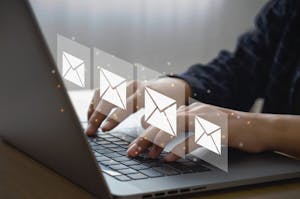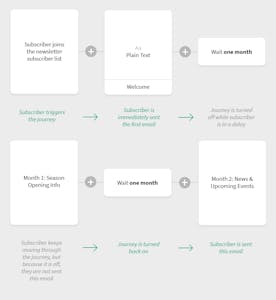- 10 minute read
- Email Marketing
The ABCs of A/B Testing Your Emails (It’s Easier Than You Think!)
Intermediate
Join hundreds of other operators and REGISTER NOW for Spark 2024 New Orleans October 13-15th!

Welcome to part two of your email automation journey — with information straight from our Email Marketing Strategist, Liz Legatt.
As you learned in part one, email automation (drip campaigns) is an email or series of emails that automatically sends to your customers at a specific trigger. This automation saves you time while contacting customers at the right time in their customer journeys — which of course can lead to more bookings.
Whether your goal is to welcome individuals to your mailing list or entice repeat bookings, this guide will show you how to set up an engaging, strategic email automation campaign.
To get started, check out the built-in capabilities of your chosen email platform. Most options have automation features, with pre-designed templates you can use or base your automations on.
Using the “journey designer” (or similar feature of your chosen email platform), you can easily create a series of emails that are based on a certain trigger. You’ll customize the emails and design the best way for them to drip through the journey.
Get granular with your automations to garner better results. For instance you can add:
These additions allow you to personalize the journey and target customers at the right time.
There may be a situation in which you need to pause or turn off your automation, for instance, if you are editing your journey that week or you’re closing for the season.
When the campaign is turned off, subscribers will continue to move through the steps based on your delays, but will not receive any emails. Then, if you turn it back on, customers will remain where they should be.
For example, if your business is closing for a few months for a renovation, you would turn off your automations since there are no experiences to be booked. Subscribers won’t stay stationary in the drip and instead will move through to completion.
See the image below for more details.

While you are building your email automations, remember to test their success and adjust as needed. Most platforms have built-in reporting that will show you specific metrics on how each email performed.
For more guidance on perfecting your email marketing, check out the guides below!